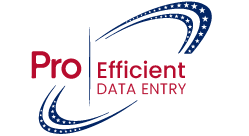
In today’s rapidly evolving world, financial and management accounting systems are crucial for formulating company policies and strategic planning. With the ever-increasing volume of data that must be processed and reported in real-time, accuracy and precision in accounting are more essential than ever.
One of the most effective ways to achieve this is through Proefficient Data Entry – a system designed to deliver accuracy, speed, and data validation. This blog explores how it helps your firm achieve regulatory compliance, enhanced accuracy, and greater efficiency in both financial and managerial data operations.
What is Financial and Management Accounting?
To appreciate the impact of Proefficient Data Entry, it’s essential to understand the distinction between financial accounting and management accounting.
Financial Accounting
-
Involves the identification, measurement, collection, classification, and reporting of financial transactions within a defined time frame.
-
Focuses on external reporting to stakeholders such as investors, regulators, shareholders, and tax authorities.
-
Aims to present a reliable and accurate financial picture of the company.
Management Accounting
-
Focuses on internal processes.
-
Helps management with policy making, budgeting, forecasting, and evaluating performance.
-
Supports strategic decision-making through timely analysis of financial and operational data.
Both disciplines rely on timely, accurate data, making a strong case for automation through Proefficient Data Entry.
Why Accurate Accounting Matters
Inaccurate accounting can lead to serious consequences:
-
❌ Misstated financial reports
-
❌ Non-compliance with tax and regulatory obligations
-
❌ Poor business decisions based on flawed data
-
❌ Damaged reputation and stakeholder trust
To avoid these, businesses should automate data processes and adopt error-reducing methods like Proefficient Data Entry.
What is Proefficient Data Entry?
Proefficient Data Entry refers to the use of modern technology, smart software, and skilled personnel to handle data with maximum speed and precision.
Unlike traditional data entry, it:
-
✅ Minimizes human error
-
✅ Ensures data consistency
-
✅ Enhances both financial and operational reporting
Key Features
-
Automated data capture
-
Real-time validation and error detection
-
Smart software tools with in-built checks
-
Controlled access and secure data storage
How Proefficient Data Entry Enhances Financial Accounting
✅ 1. Accurate Record-Keeping
-
Maintains the integrity of each financial transaction.
✅ 2. Faster Month-End and Year-End Closings
-
Speeds up reconciliation and reporting, helping you meet deadlines.
✅ 3. Compliance with GAAP & IFRS
-
Generates reports that are always audit-ready and regulatory compliant.
✅ 4. Reduced Errors and Improved Audit Trails
-
Enables real-time corrections and transparent data trails.
How It Supports Management Accounting
✅ 1. Real-Time Access to Data
-
Gives management instant insights for better decision-making and forecasting.
✅ 2. Customized Reports
-
Provides tailored reports by departments, cost centers, or projects.
✅ 3. More Accurate Budgeting and Forecasting
-
Helps track trends and allocate resources based on accurate insights.
✅ 4. Scenario Planning
-
Enables simulations and “what-if” analysis for strategic foresight.
Benefits of Proefficient Data Entry Integration
-
✅ Improved Accuracy: Eliminates keystroke errors, producing more reliable reports.
-
✅ Increased Efficiency: Frees up time for analysis by reducing manual tasks.
-
✅ Cost Savings: Reduces auditing efforts and labor costs in the long run.
-
✅ Data Security: Protects sensitive data with secure access and encryption.
-
✅ Scalability: Easily handles growing data volumes without compromising performance.
Real-World Industry Applications
Retail
-
Accurate, real-time sales and inventory reporting.
Healthcare
-
Precise billing and insurance claim management.
Manufacturing
-
Tracks production costs, labor, and materials for budgeting accuracy.
Service Sector
-
Automates invoicing, client records, and payment processing to improve customer experience.
Best Practices for Implementing Proefficient Data Entry
-
Choose the Right Tools: Use systems with automated data entry and integration features.
-
Employee Training: Train team members thoroughly in using the new systems.
-
Establish Clear Policies: Define validation rules, access permissions, backups, and deletion timelines.
-
Evaluate Performance: Measure the efficiency and accuracy of data entry regularly.
-
Consider Outsourcing: Hire experts or partners for tailored implementation based on your business size and type.
Conclusion
In today’s data-driven world, financial and management decisions rely heavily on accurate, up-to-date information. Integrating Proefficient Data Entry into your accounting processes is more than just an upgrade—it’s a step toward better decision-making, regulatory compliance, operational efficiency, and strategic growth.
Whether you’re a startup, SME, or enterprise, the adoption of structured data entry systems improves transparency, boosts scalability, and ensures your organization is equipped to respond with agility.
Take control of your data today. Empower your financial decisions with precision-driven Proefficient Data Entry systems.


Add a Comment